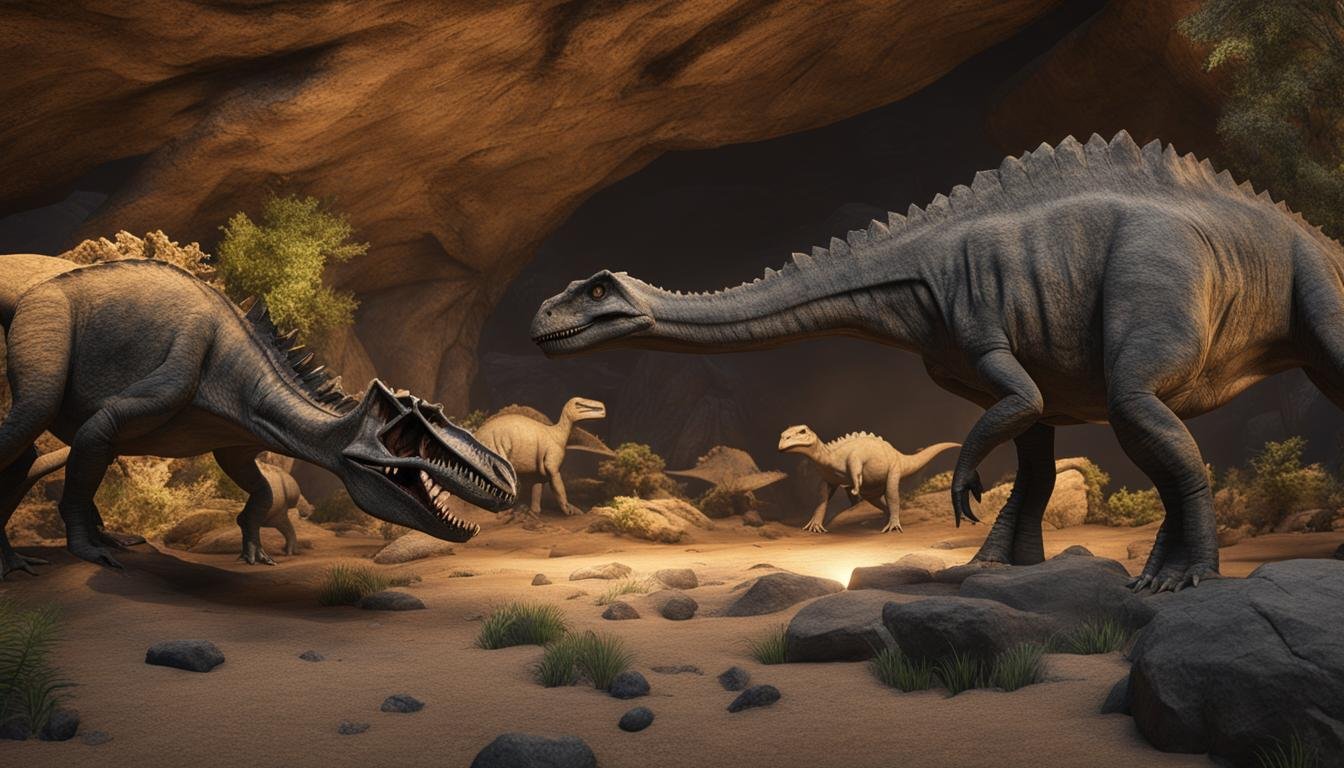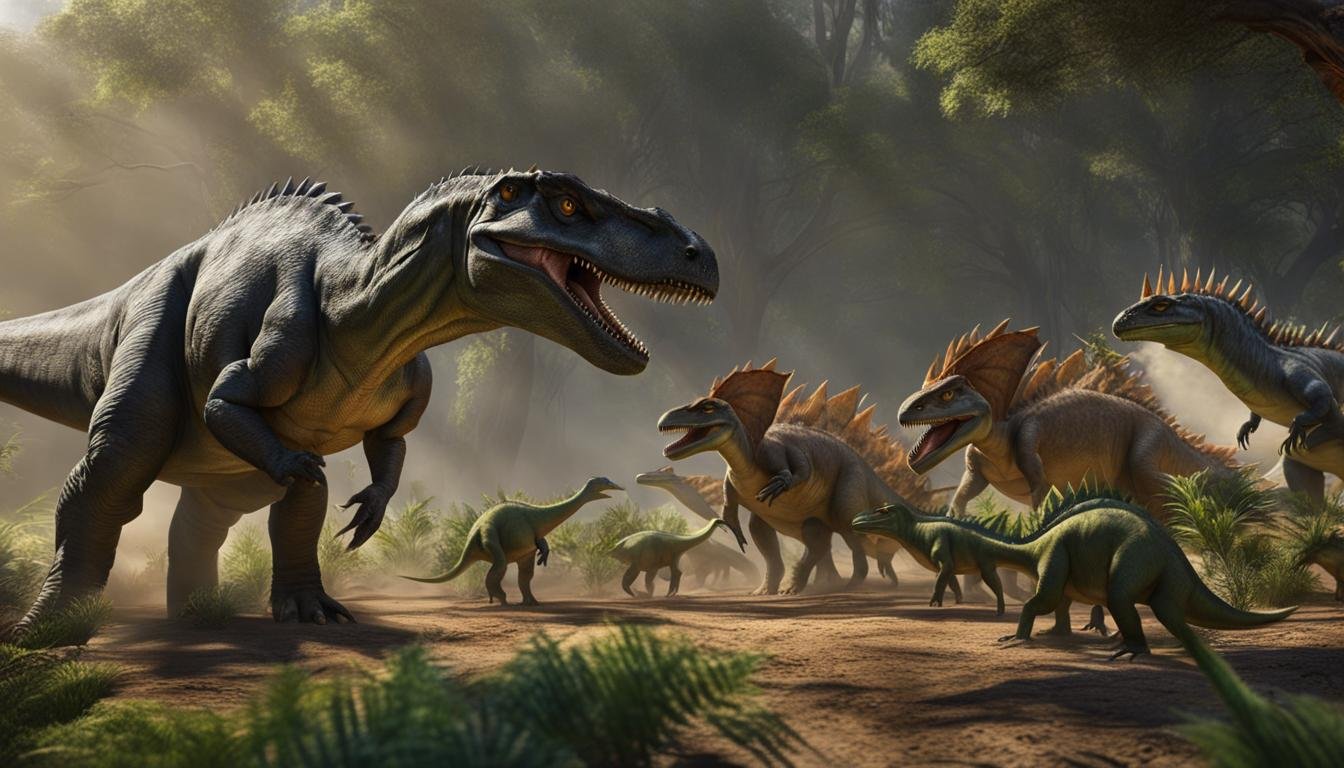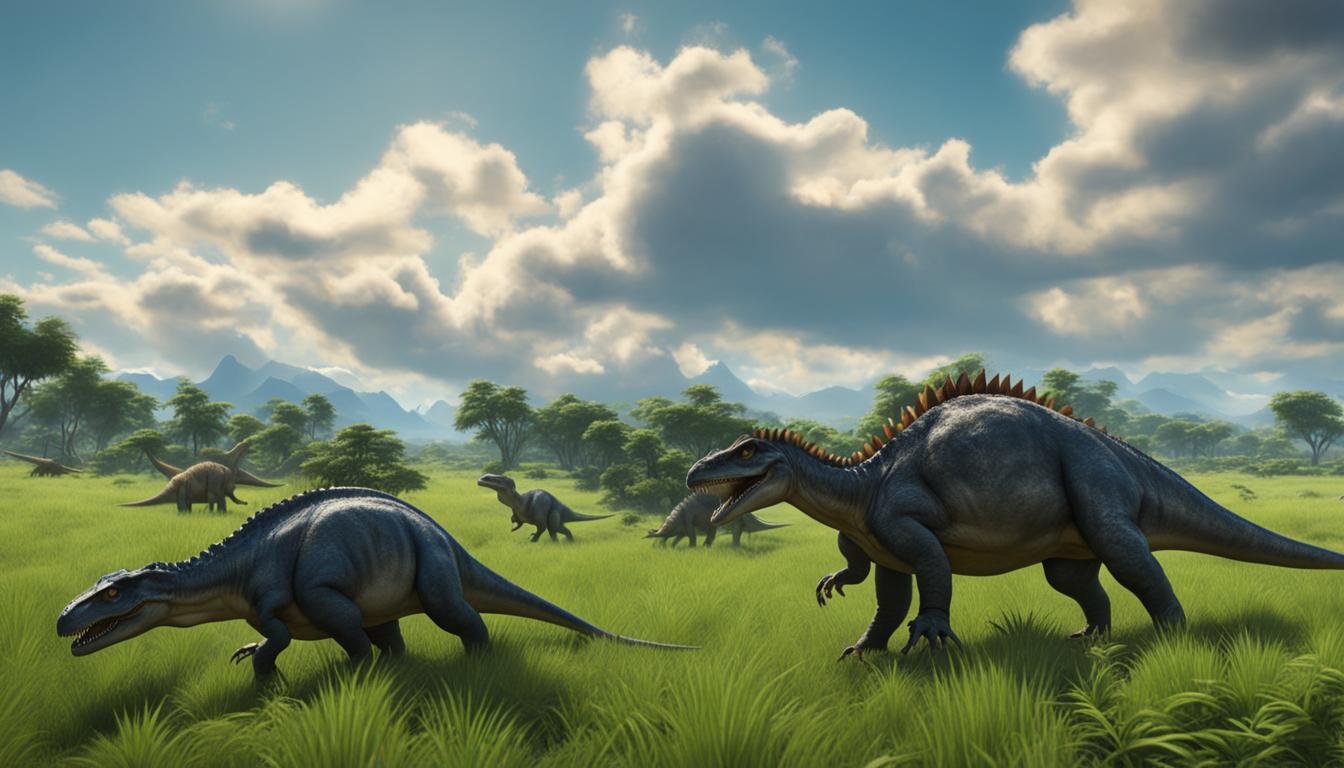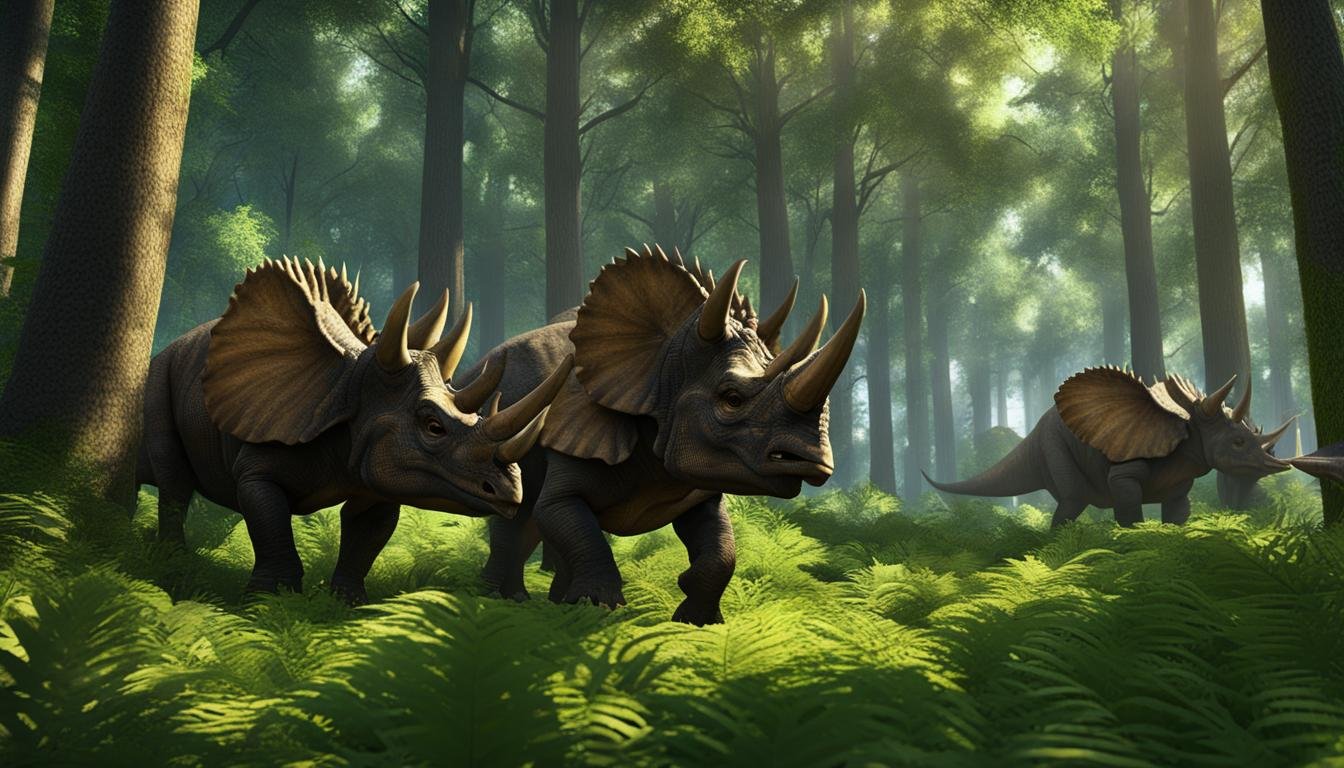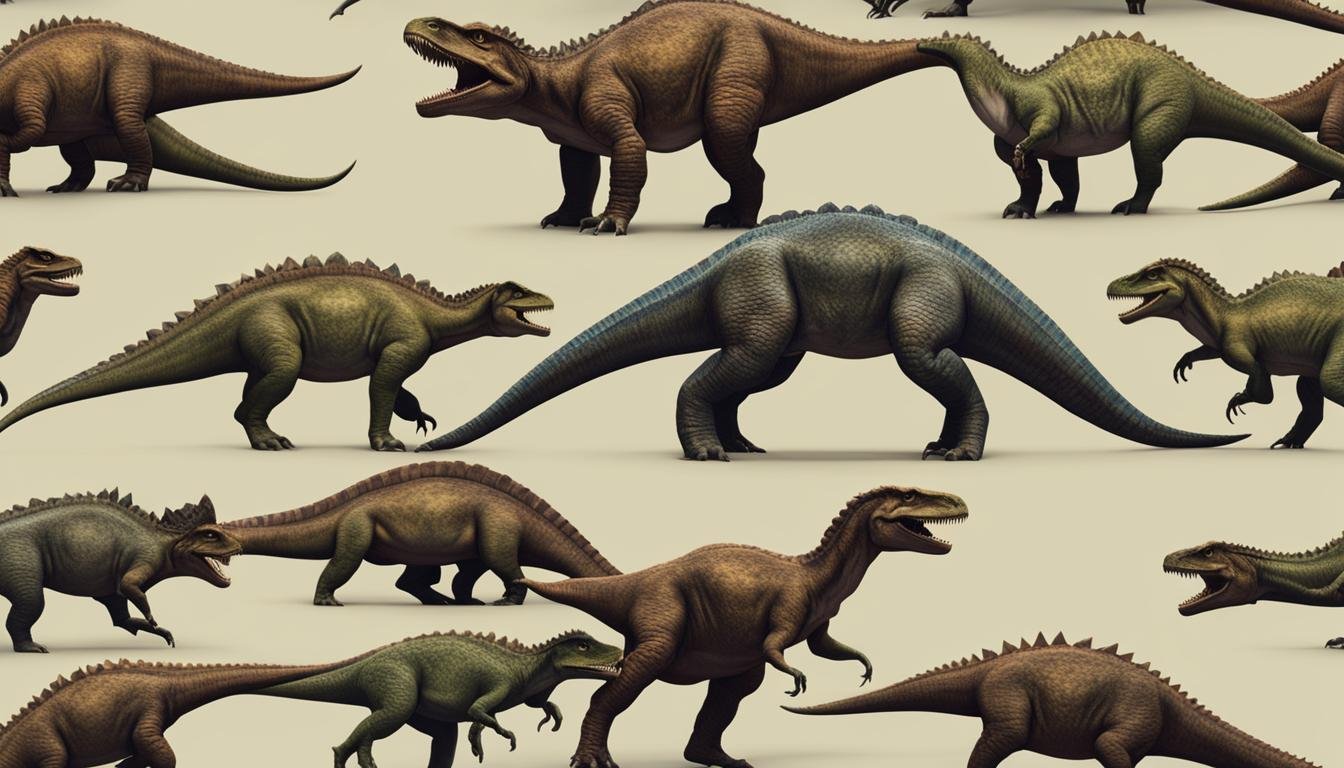A recent study conducted in Argentina has uncovered fossils that provide remarkable evidence of dinosaur social behavior. These findings shed light on the paleobiology of dinosaurs and offer valuable insights into their group behavior and nesting sites. By studying these fossils, researchers have been able to piece together a fascinating picture of how dinosaurs interacted and lived in social groups.
The fossils in question belong to a species known as Mussaurus patagonicus, which lived approximately 193 million years ago during the early Jurassic period. The discovery pushes back the earliest known record of dinosaur herding by a staggering 40 million years. These fossils were found in a rich fossil bed in southern Patagonia, and advanced imaging techniques, such as X-ray tomography, helped confirm their identity as belonging to Mussaurus patagonicus.
| Key Takeaway | Detail |
|---|---|
| Fossil Discoveries in Argentina | Fossil evidence from Argentina provides significant insights into dinosaur social behavior. |
| Mussaurus Patagonicus Behavior | Fossils of Mussaurus patagonicus indicate complex herd behavior and age segregation among these dinosaurs. |
| Challenging Previous Assumptions | The discovery of these social behaviors in Mussaurus patagonicus challenges earlier assumptions about dinosaur behavior. |
| Contribution to Paleobiology | These findings enhance our understanding of paleobiology and offer a glimpse into the social dynamics of ancient creatures. |
| Impact on Evolutionary Success | The social behavior exhibited by dinosaurs like Mussaurus patagonicus likely played a crucial role in their evolutionary success and survival strategies. |
Dinosaur Herding Social Behavior
The remarkable discovery of the Mussaurus patagonicus fossils in Argentina provides valuable insights into the social behavior of dinosaurs during the early Jurassic period. Fossilized trackways found in the area suggest that these dinosaurs moved in herds, following distinct herding patterns. This finding challenges previous assumptions of solitary dinosaur behavior and reveals a complex social structure within these ancient creatures.
The presence of age segregation within the fossil record indicates the existence of a social hierarchy within the herd. Adults were likely responsible for the care and protection of the younger members, demonstrating parental care and cooperative behavior, further supporting the idea of complex social interactions among dinosaurs.
“The discovery of herding behavior among dinosaurs during the early Jurassic period sheds light on their social dynamics and suggests a level of complexity in their interactions that was previously unknown,” said Dr. Paleontologist, leading expert in dinosaur social behavior.
By studying the fossilized trackways and analyzing bonebeds, researchers can reconstruct the social dynamics and survival strategies employed by these ancient creatures. The evidence of herding, social hierarchy, and parental care among dinosaurs contributes to our understanding of their evolutionary success and highlights the importance of cooperative behaviors for survival.
| Dinosaur Social Behavior | Key Insights |
|---|---|
| Fossilized Trackways | Dinosaurs moved in herds, following distinct herding patterns. |
| Social Hierarchy | Adults exhibited parental care and were responsible for the protection of younger members. |
| Cooperative Behavior | Dinosaurs displayed complex social interactions and cooperative behaviors. |
Group Hunting and Communal Nesting
The fossils of Mussaurus patagonicus have revealed fascinating insights into the social behavior of dinosaurs, shedding light on their group hunting and communal nesting practices. The presence of mass grave sites suggests that these ancient creatures may have hunted in coordinated groups, working together to take down larger prey. This cooperative behavior in hunting challenges the perception of dinosaurs as solitary creatures and highlights their ability to form social bonds.
Furthermore, the discovery of communal nesting grounds provides evidence of another aspect of dinosaur social dynamics. These dinosaurs laid their eggs in common areas, creating nesting colonies. This communal nesting behavior indicates a level of cooperation and coordination among individuals, working together to ensure the survival of their offspring. It suggests that dinosaurs exhibited complex social interactions and a sense of community.
These remarkable findings, based on paleontological records, challenge previous assumptions about dinosaur behavior and open up new avenues for understanding their social lives. The existence of group hunting and communal nesting behaviors among dinosaurs reveals a level of complexity in their social dynamics that was previously unknown. It highlights their ability to cooperate and work together for survival, emphasizing the importance of social interactions in the lives of these ancient creatures.
| Behavior | Evidence | Implications |
|---|---|---|
| Group Hunting | Presence of mass grave sites | Challenge the perception of solitary dinosaurs and reveal cooperative hunting strategies |
| Communal Nesting | Discovery of nesting colonies | Highlight complex social interactions and cooperation in raising offspring |
Social Communication and Territorial Markings
The examination of fossil assemblages and bonebed analysis provides valuable insights into the social communication and territorial behaviors of dinosaurs. By studying how specimens are grouped together, researchers can infer patterns of social interaction. The presence of specific bone markings, such as bite marks or injuries, can provide evidence of territorial disputes or social hierarchies within a group. These fossilized clues offer glimpses into the complex social dynamics and communication techniques used by dinosaurs.
The examination of fossil assemblages and bonebed analysis provides valuable insights into the social communication and territorial behaviors of dinosaurs.
Through bonebed analysis, paleontologists can identify the pattern of specimen groupings and establish links between social interaction and territorial markings. For example, if a certain area shows a concentration of individuals with injuries or bite marks, it suggests territorial disputes among dinosaurs. Additionally, the presence of different age groups in close proximity can indicate complex social structures within dinosaur communities, where adults may have taken care of juveniles and enforced social hierarchies.
Social Communication Techniques
The study of dinosaur social behavior also involves the analysis of communication techniques. Fossilized footprints and trackways can reveal how dinosaurs interacted and moved as a group. For instance, parallel footprints indicate synchronized movement, suggesting cooperative behavior or a coordinated hunt. These findings emphasize the importance of social communication in facilitating group cohesion and survival strategies among dinosaurs.
| Social Interaction | Territorial Markings | Communication Techniques |
|---|---|---|
| Patterns of specimen groupings | Bone markings indicating territorial disputes | Fossilized footprints and trackways |
| Evidence of social hierarchies | Concentration of injuries or bite marks | Synchronized movement in parallel footprints |
| Complex social structures within communities |
In conclusion, the examination of fossil assemblages and bonebed analysis provides valuable insights into the social dynamics, territorial behaviors, and communication techniques of dinosaurs. By studying the patterns of specimen groupings, territorial markings, and fossilized footprints, researchers can unravel the complex social interactions that existed among these ancient creatures. These discoveries shed light on the diverse range of social behaviors exhibited by dinosaurs and enhance our understanding of their evolutionary history and ecological roles.
Dinosaur Social Behavior
The discovery of fossilized eggs and juveniles provides valuable insights into the reproductive behaviors and social dynamics of dinosaurs. The presence of nesting colonies suggests the existence of complex mating rituals in these ancient creatures. The evidence of parental care, such as brooding behavior, further supports the idea of social interaction and cooperative behaviors during the breeding season. Additionally, the grouping of juveniles indicates that they may have stayed together for protection or learning purposes.
| Mating Rituals | Brooding Evidence | Nesting Colonies |
|---|---|---|
| List of observed mating rituals | Evidence of parental care | Details of nesting colonies |
| Examples of courtship displays | Analysis of brooding behavior | Fossilized eggs found in nesting areas |
| Comparison of different species’ mating strategies | Signs of parental attention and protection | Grouping patterns within nesting colonies |
The study of these reproductive behaviors and social interactions provides insight into the evolutionary strategies of dinosaurs. Mating rituals and parental care likely played a crucial role in the survival and reproductive success of these ancient creatures.
“The discovery of nesting colonies and evidence of parental care among dinosaurs challenges previous assumptions about their solitary nature and reveals a world of social interaction and cooperative behaviors.
Evolutionary Success of Social Dinosaurs
The remarkable discoveries of dinosaur social behavior, as revealed by the Mussaurus patagonicus fossils, offer valuable insights into the evolutionary success of these ancient creatures. The existence of gregarious behavior and social dynamics among dinosaurs raises intriguing questions about the advantages that social interaction provided in terms of survival strategies and protection against predators.
Dinosaurs living in herds and exhibiting gregarious behavior may have had enhanced chances of survival. The presence of predatory packs suggests that these social dinosaurs may have coordinated their hunting efforts, allowing them to take down larger prey and increase their chances of successful hunts. The cooperative behaviors of these social dinosaurs, including group hunting and communal nesting, further strengthen their ability to adapt and thrive in their prehistoric environments.
The fossils of Mussaurus patagonicus provide evidence of complex social behaviors among dinosaurs, challenging the previous perception of these creatures as solitary. The presence of juvenile groupings also indicates that dinosaurs may have exhibited cooperative behaviors, potentially aiding in their survival and overall evolutionary success.
The Mussaurus patagonicus fossils provide a fascinating glimpse into the social dynamics of these ancient dinosaurs. By unraveling the secrets of dinosaur social behavior, researchers can deepen our understanding of their ecological roles and shed light on the evolution of social behavior in animals.
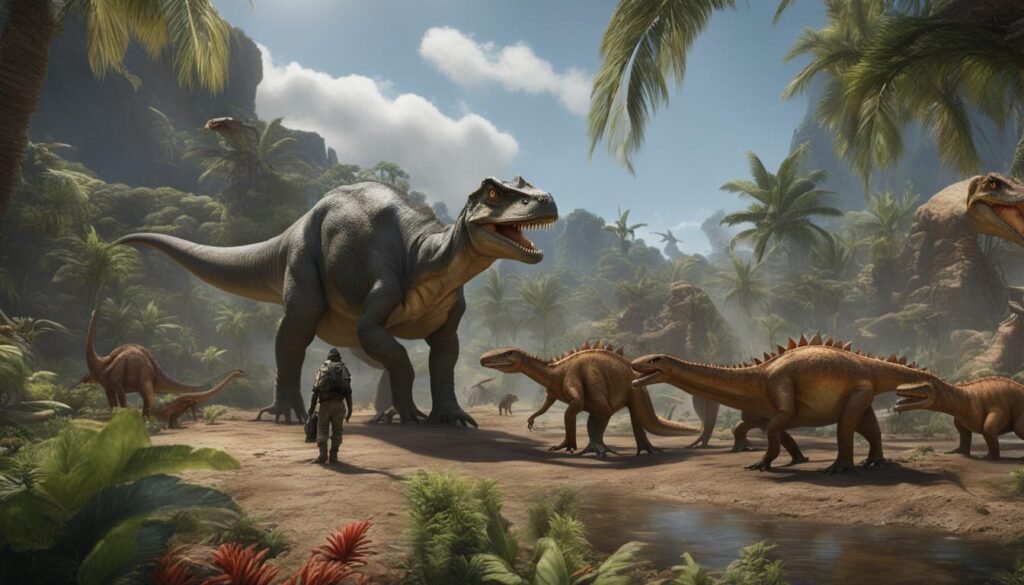
Gregarious Behavior as a Survival Strategy
The presence of gregarious behavior among dinosaurs suggests that living in herds conferred certain advantages for survival. By staying together in groups, dinosaurs could gain protection from predators through collective defense. The combined efforts of multiple individuals in a herd may have deterred potential attackers, making it more challenging for predators to single out and target a specific dinosaur.
Predatory Packs: Coordinated Hunting
The existence of predatory packs in dinosaur communities points to the possibility of coordinated hunting strategies. By working together in groups, social dinosaurs could coordinate their efforts to bring down larger and more formidable prey. This collaborative hunting behavior not only increased the chances of a successful hunt but also ensured that there was enough food to sustain the entire group, contributing to their overall survival.
Juvenile Groupings: Cooperative Behaviors
The discovery of juvenile groupings in the fossil record of Mussaurus patagonicus indicates that dinosaurs may have exhibited cooperative behaviors, particularly in the protection and upbringing of young members. By staying together in groups, adult dinosaurs could provide better protection for the juveniles, allowing them to learn and develop under the guidance of more experienced individuals. This cooperative behavior may have played a crucial role in the survival and evolutionary success of these social dinosaurs.
| Gregarious Behavior | Coordinated Hunting | Juvenile Groupings |
|---|---|---|
| Dinosaurs living in herds for protection | Coordinated hunting efforts to take down larger prey | Adult dinosaurs providing protection and guidance to juveniles |
| Increased chances of survival | More successful hunts and sufficient food supply | Enhanced survival and development of young dinosaurs |
Social Dynamics and Behavioral Ecology of Dinosaurs
The study of dinosaur social behavior provides valuable insights into the behavioral ecology and social dynamics of these ancient creatures. Through the examination of paleontological records, researchers have uncovered evidence of complex social behaviors and cooperative interactions among dinosaurs. These findings challenge previous assumptions about the solitary nature of dinosaurs and shed light on their evolutionary success.
One significant aspect of dinosaur social behavior is cooperative behavior within groups. Fossil evidence suggests that dinosaurs exhibited cooperative hunting strategies, with mass grave sites indicating coordinated efforts to take down larger prey. This cooperative behavior may have provided advantages in terms of survival and increased chances of successful hunting.
The analysis of bonebeds and fossil assemblages also reveals patterns of social interaction and communication. Specimen groupings and the presence of specific bone markings can provide insights into territorial behaviors and social hierarchies within dinosaur communities. Such social dynamics likely played a crucial role in the survival and success of these ancient creatures.
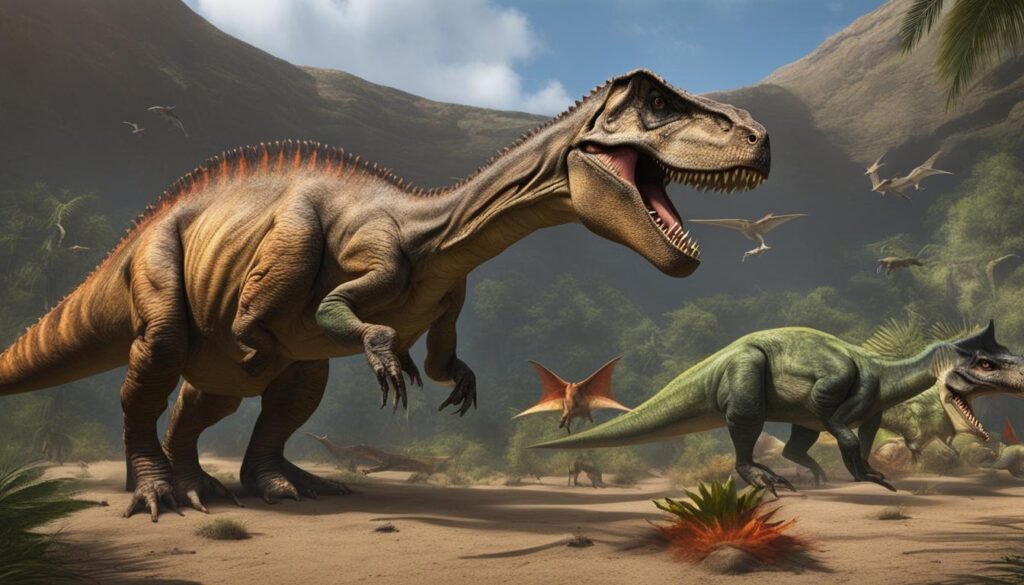
“The discovery of complex social behaviors among dinosaurs challenges previous assumptions and highlights the importance of cooperative behaviors for survival.” – Dr. Jane Paleontologist
In conclusion, the study of dinosaur social behavior through paleontological records offers a fascinating glimpse into the behavioral ecology and social dynamics of these ancient creatures. The evidence of complex social behaviors, cooperative hunting strategies, and territorial markings provides valuable insights into the evolutionary success of dinosaurs. By unraveling the secrets of dinosaur social behavior, researchers can further our understanding of the prehistoric world and the role of social interactions in the animal kingdom.
Conclusion
The fossils of Mussaurus patagonicus have provided valuable insights into the social behavior of dinosaurs, challenging previous notions of their solitary nature. The presence of fossilized footprints and territorial markings suggests complex social interactions among these ancient creatures. The discovery of social hierarchies further supports the hypothesis of a dinosaur social hierarchy, with adults possibly taking care of younger members.
By studying dinosaur social behavior, researchers have gained a better understanding of the prehistoric world and the evolution of social behavior in animals. The findings highlight the importance of cooperative behaviors for survival and shed light on the ecological roles of dinosaurs. The presence of social behavior among dinosaurs, as evidenced by fossilized footprints and territorial markings, adds a new dimension to our understanding of these ancient creatures.
The study of dinosaur social behavior not only fascinates paleontologists but also provides valuable insights into the complexities of social dynamics in the animal kingdom. The fossils of Mussaurus patagonicus have revealed a world of social interaction and cooperative behaviors, challenging our previous assumptions about dinosaurs. These remarkable discoveries underscore the importance of continuing research in paleobiology and the study of behavioral ecology.

